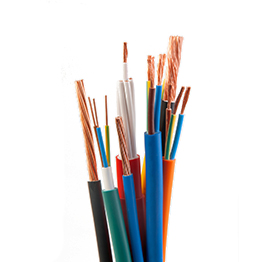
Building wire is an essential component of electrical systems in residential, commercial, and industrial structures. It is designed to carry electricity from the main power source to outlets, lights, and appliances throughout a building. Choosing the right type of building wire is crucial for ensuring the safety and efficiency of an electrical installation. In this article, we will explore what building wire is, its advantages and disadvantages, and its common applications.
What is Building Wire?
Building wire, also known as electrical wire, is a type of insulated conductor used in wiring systems for transmitting electricity within buildings. Typically made of copper or aluminum, building wire is insulated to protect against electrical faults, reduce the risk of fires, and prevent shock hazards. The wire comes in different gauges (thicknesses) and types, each suited for specific uses depending on the load requirements and environment.
Advantages of Building Wire
High Conductivity
One of the main advantages of building wire, especially copper wire, is its high conductivity. Copper building wire is known for its excellent ability to carry electrical current with minimal resistance, reducing energy loss and making it an efficient conductor for wiring systems. This efficiency translates to more reliable power delivery and lower energy costs over time.
Durability
Building wire is designed to be highly durable, capable of withstanding the harsh conditions of installation and use. The insulation materials, such as PVC (polyvinyl chloride) or THHN (thermoplastic high-heat nylon-coated), protect the wire from moisture, chemicals, and abrasion, making it long-lasting and reliable in various environments. Some building wires, such as THWN (thermoplastic heat- and water-resistant nylon-coated) wire, are also rated for outdoor use.
Safety
Building wire is manufactured according to strict safety standards to prevent electrical hazards such as short circuits, electrical fires, and shock. Proper insulation helps protect users and the surrounding building materials from the dangers associated with electrical faults. Many building wires are also flame-retardant, offering additional protection in case of fire.
Versatility
Building wire comes in a variety of gauges and insulation types, allowing for versatile use in various applications, from small household circuits to large industrial power systems. Different wires are suited for specific voltage levels, making building wire adaptable to the needs of the project.
Disadvantages of Building Wire
Cost
One of the significant drawbacks of building wire, particularly copper wire, is its cost. Copper is a relatively expensive material compared to alternatives like aluminum. This higher cost can increase the overall expenses of large electrical projects, especially when copper wire is used extensively. However, the superior performance and longevity of copper wire may justify the upfront investment in many cases.
Weight
Copper wire is heavier than aluminum wire, which can be a disadvantage in applications where weight is a concern. Heavier wiring systems may require additional structural support, adding complexity to the installation process. In such cases, lighter alternatives, such as aluminum wire, might be preferred to reduce the overall weight load.
Aluminum Wire’s Lower Conductivity
While aluminum wire is more affordable and lightweight than copper wire, it has lower electrical conductivity. As a result, aluminum wire must be thicker than copper wire to carry the same electrical load. This can limit its use in certain applications, particularly those requiring high-performance conductors.
Applications of Building Wire
Building wire is used in a wide range of applications across different types of buildings. Some common applications include:
- Residential Wiring: Building wire is used to connect lights, outlets, appliances, and other electrical devices in homes. Copper wire is commonly preferred in residential applications due to its conductivity and durability.
- Commercial and Industrial Wiring: In larger buildings and industrial facilities, building wire is used to power heavy machinery, HVAC systems, and lighting. Here, both copper and aluminum wire may be used depending on the specific electrical load and cost considerations.
- Outdoor and Underground Wiring: Certain types of building wire, such as THWN and UF-B (underground feeder), are designed for outdoor or underground use. These wires are insulated to protect against moisture, heat, and direct exposure to the elements.
Conclusion
Building wire is a fundamental part of any electrical system, providing the necessary infrastructure to safely and efficiently carry electricity throughout residential, commercial, and industrial buildings. With advantages like high conductivity, durability, and safety, building wire—particularly copper wire—is a reliable choice for many applications. However, its higher cost and weight can be drawbacks, especially for large projects or when aluminum wire offers a more cost-effective alternative.
Understanding the pros and cons of building wire helps in selecting the right type of wire for specific applications, ensuring both safety and performance in electrical installations. Ultimately, the right choice depends on the specific requirements of the project, including budget, load capacity, and environmental factors.

